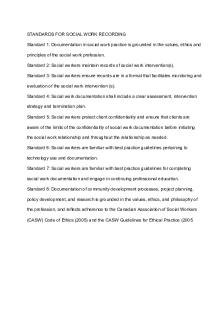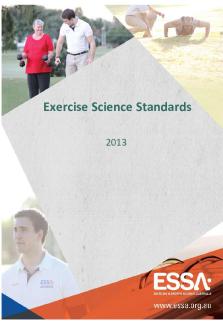NMBA Standards PDF

| Title | NMBA Standards |
|---|---|
| Author | Sandeep Kaur |
| Course | Nursing |
| Institution | Flinders University |
| Pages | 2 |
| File Size | 90.3 KB |
| File Type | |
| Total Downloads | 64 |
| Total Views | 137 |
Summary
REFLECTION ON NMBA STANDARDS...
Description
Introduction: In this reflective essay I am going to reflect on my experience about NMBA standards for registered nurse in an aged care facility using a Gibbs reflective cycle - an important reflective approach for health professionals (Gibbs, 1998). Description: During my posting at aged care facility, I observed that registered nurses use critical thinking, strategies and the best available evidence in making decisions and providing safe, quality nursing practice within person-centred and evidence-based framework despite of busy shifts (Nursing and Midwifery Board of Australia, 2016). Feelings: Initially, I was very stressed and anxious, as I was not competent enough to critically think and analyse the nursing practices. However, continuous practice throughout my placement helped me to improve my critical thinking and I was happy. Evaluation: On evaluation I realised that this incident has both positive and negative effect on me. The positive side of the incident is I am more confident in my practice and I believe that my critical thinking has significantly improved. On the negative side, lack of critical thinking can be harmful for residents. Analysis: The analysis reveals that ability to critically think helps in positive patient outcome. However the busy shifts and frequent switching between the various tasks can be a barrier to critical thinking sometimes (Cornell, Riordan, Townsend-Gervis & Mobley, 2011). Conclusion: It can be concluded that, critical thinking enable the registered nurses to provide safe and competent care (Watkins, 2019; Jacob, Duffield & Jacob, 2017). Action plan: In future, my aim is to develop my ability to think critically and analyse the nursing practices by using my logical thinking and open mindedness (NurseJournal, 2020).
References: 1. Cornell, P., Riordan, M., Townsend-Gervis, M., & Mobley, R. (2011). Barriers to Critical Thinking. JONA: The Journal Of Nursing Administration, 41(10), 407-414. doi: 10.1097/nna.0b013e31822edd42 2. Gibbs, G. (1988) Learning by doing: A guide to teaching and learning methods. Further Educational Unit, Oxford Polytechnic, Oxford. 3. Jacob, E., Duffield, C., & Jacob, D. (2017). A protocol for the development of a critical thinking assessment tool for nurses using a Delphi technique. Journal Of Advanced Nursing, 73(8), 1982-1988. doi: 10.1111/jan.13306 4. NurseJournal. (2019). The Value of Critical Thinking in Nursing + Examples. Retrieved from https://nursejournal.org/community/the-value-of-criticalthinking-in-nursing/ 5. Nursing and Midwifery Board of Australia. (2016). Nursing and Midwifery Board of Australia - Professional standards. Retrieved from https://www.nursingmidwiferyboard.gov.au/Codes-GuidelinesStatements/Professional-standards.aspx 6. Watkins, A. (2019). Cultivating Critical Thinking in Healthcare. Retrieved from https://www.ausmed.com.au/cpd/articles/cultivating-critical-thinking-inhealthcare...
Similar Free PDFs

NMBA Standards
- 2 Pages

Standards Hotel
- 59 Pages

Chapter-02-standards
- 13 Pages

Joint-charging-standards
- 1 Pages

Teaching Standards Tracker
- 10 Pages

Chapter 2 professional standards
- 35 Pages

Standards for recording
- 2 Pages

AES-Professional-Standards
- 31 Pages

Ch01-accounting-standards
- 14 Pages

Biology NSW Education Standards
- 4 Pages

Chapter 2 professional standards
- 35 Pages
Popular Institutions
- Tinajero National High School - Annex
- Politeknik Caltex Riau
- Yokohama City University
- SGT University
- University of Al-Qadisiyah
- Divine Word College of Vigan
- Techniek College Rotterdam
- Universidade de Santiago
- Universiti Teknologi MARA Cawangan Johor Kampus Pasir Gudang
- Poltekkes Kemenkes Yogyakarta
- Baguio City National High School
- Colegio san marcos
- preparatoria uno
- Centro de Bachillerato Tecnológico Industrial y de Servicios No. 107
- Dalian Maritime University
- Quang Trung Secondary School
- Colegio Tecnológico en Informática
- Corporación Regional de Educación Superior
- Grupo CEDVA
- Dar Al Uloom University
- Centro de Estudios Preuniversitarios de la Universidad Nacional de Ingeniería
- 上智大学
- Aakash International School, Nuna Majara
- San Felipe Neri Catholic School
- Kang Chiao International School - New Taipei City
- Misamis Occidental National High School
- Institución Educativa Escuela Normal Juan Ladrilleros
- Kolehiyo ng Pantukan
- Batanes State College
- Instituto Continental
- Sekolah Menengah Kejuruan Kesehatan Kaltara (Tarakan)
- Colegio de La Inmaculada Concepcion - Cebu




